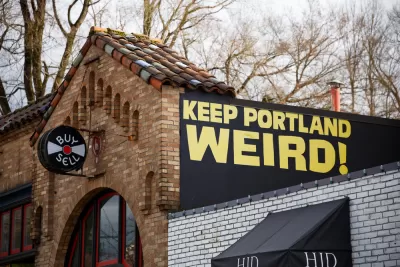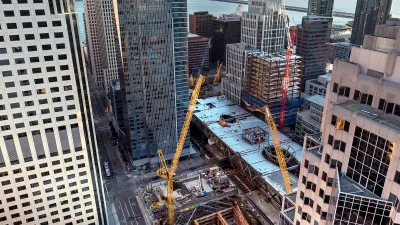An inclusionary zoning case study is emerging in Portland. Even if inclusionary zoning isn't broken, it might still need a fix, say local planners.

Apartment development has slowed after years of multi-family construction in Portland, according to an article by Eliot Njus, and some are placing blame for the changing market fundamentals on the city's inclusionary zoning policy.
…Construction costs have ballooned, as have land prices. The glut of new construction, meanwhile, has taken the wind out of rising rents, at least at the high end.
But Portland officials are increasingly worried the city’s inclusionary zoning policy, which compels developers to set aside rent-restricted units in large apartment and condo projects, might be playing a role, too. And if home construction dries up, it could ultimately push housing costs even higher.
Although its not totally clear exactly how much inclusionary zoning is responsible for the drop off in apartment construction in Portland, the city agency tasked with monitoring the program, is considering whether it's "time to consider changes that could give developers a better deal — or risk putting an artificial cap on the housing supply, driving rents higher in the long run." Njus quotes Tyler Bump, a senior economic planner with the Bureau of Planning and Sustainability, in the article. Bump also recently authored a report for the Bureau of Planning and Sustainability [pdf] that documents the slowing pace of development permitting during the period from February 2017 to February 2018. That report concludes that for the city to keep pace with the housing goals established in the city's 2035 Comprehensive Plan, the city must "explore a process to make adjustments or modifications to the Inclusionary Housing Zoning Code and Program requirements."
FULL STORY: Apartment construction is drying up. Is affordable housing measure to blame?

Alabama: Trump Terminates Settlements for Black Communities Harmed By Raw Sewage
Trump deemed the landmark civil rights agreement “illegal DEI and environmental justice policy.”

Planetizen Federal Action Tracker
A weekly monitor of how Trump’s orders and actions are impacting planners and planning in America.

The 120 Year Old Tiny Home Villages That Sheltered San Francisco’s Earthquake Refugees
More than a century ago, San Francisco mobilized to house thousands of residents displaced by the 1906 earthquake. Could their strategy offer a model for the present?

Indy Neighborhood Group Builds Temporary Multi-Use Path
Community members, aided in part by funding from the city, repurposed a vehicle lane to create a protected bike and pedestrian path for the summer season.

Congestion Pricing Drops Holland Tunnel Delays by 65 Percent
New York City’s contentious tolling program has yielded improved traffic and roughly $100 million in revenue for the MTA.

In Both Crashes and Crime, Public Transportation is Far Safer than Driving
Contrary to popular assumptions, public transportation has far lower crash and crime rates than automobile travel. For safer communities, improve and encourage transit travel.
Urban Design for Planners 1: Software Tools
This six-course series explores essential urban design concepts using open source software and equips planners with the tools they need to participate fully in the urban design process.
Planning for Universal Design
Learn the tools for implementing Universal Design in planning regulations.
Clanton & Associates, Inc.
Jessamine County Fiscal Court
Institute for Housing and Urban Development Studies (IHS)
City of Grandview
Harvard GSD Executive Education
Toledo-Lucas County Plan Commissions
Salt Lake City
NYU Wagner Graduate School of Public Service





























